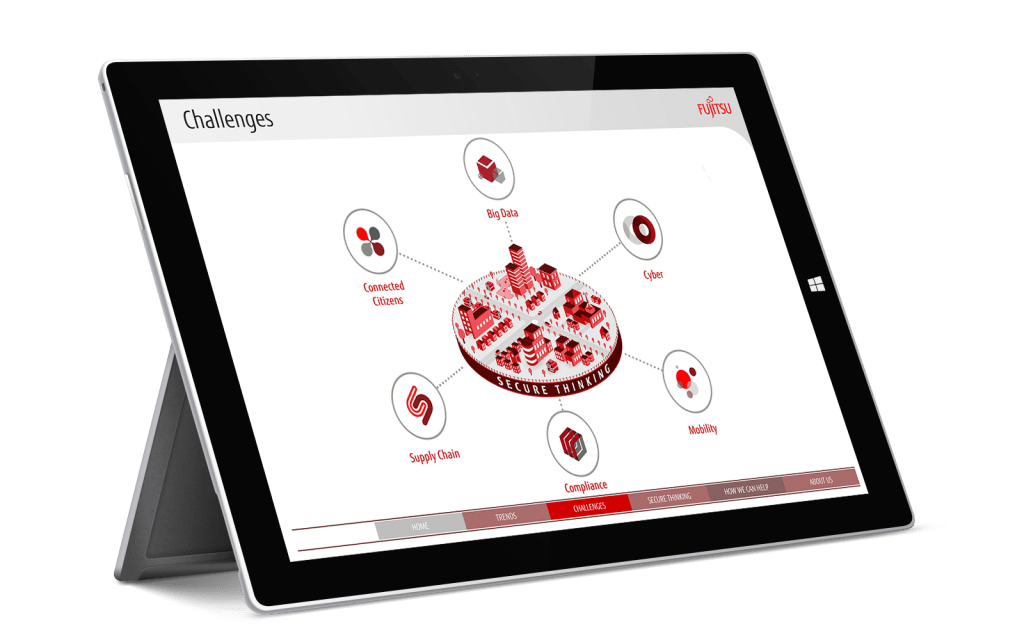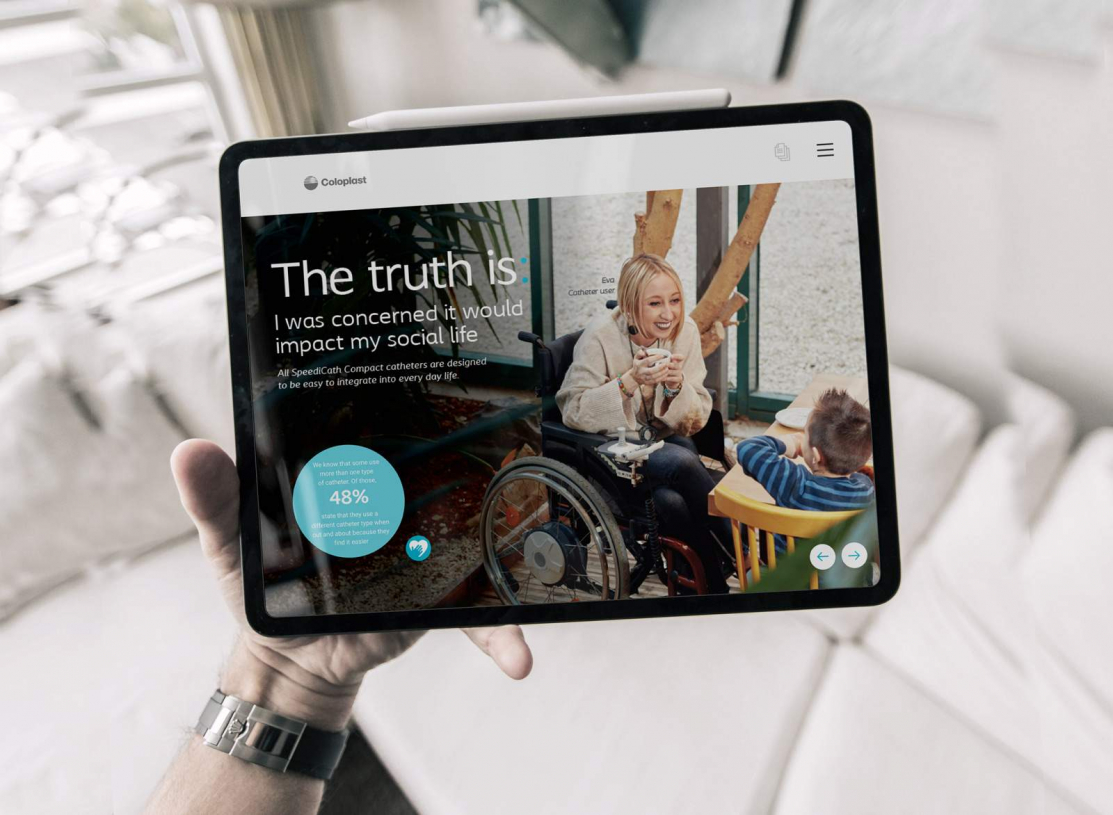If you’re new to sales enablement – or you’re looking to streamline your processes – you may wonder what your first steps should be when putting together a plan of action. What sales enablement best practices should be at the top of your list?
You may be thinking of developing a sales enablement tool or strategy to help with interactive sales presentations, or perhaps to use on a touchscreen at an event?
Essentially, you need to think about looking through your processes and empowering your team by ensuring they have everything they need to succeed – and streamlining and process for smooth and seamless customer experiences, of course.
One of the main things we help clients with is to shine in the boardroom and help them start those all-important sales conversations and ensure they’re consultative and productive.
That’s why we’re going to highlight these five sales enablement best practices, to help guide you when putting together your own sales enablement strategy:
Boost growth with these sales enablement best practices…
1. Ensure your sales enablement strategy is constantly evolving
Regardless of what stage you’re at in the sales enablement process, one thing is certain; your sales enablement strategy should grow and evolve along with your company.
After all, the industry you’re in is a constantly changing landscape, and your customers find themselves facing new trends and challenges all the time. Your competitors are evolving, too.
That’s why every three months, you should review your strategy based on what’s working, and what’s not. In other words, keep your strategy and sales team agile, and ready to roll with the punches.
2. Make quality sales content readily available
One of the best descriptions of sales enablement we love, is: ‘delivering the right content at the right time to the right person’. Content is an invaluable tool for your sales team, yet many people seem to underestimate its value – in fact, around 60 – 70% of sales content doesn’t get used.
Even more worryingly, a recent study by Aberdeen.com found sales reps spend, on average, five working days every month searching for the relevant content they need to make a sale. That’s a lot of time that could have been spent on getting sales!
However, if you can invest in a good content management tool (CMS) or sales enablement platform, such as Showpad, or an interactive sales tool, such as a touchscreen for events or a marketing suite, it could help you and your team manage your content effectively – and ensure they can find what they need at the touch of a button.
Tip: We’ve actually written about why good content management is the key to sales enablement!
3. Combine technology and methodology
According to SiriusMinds, 67% of the buyer’s journey now takes place digitally; which means in order for sales enablement to be truly effective, we need to strike the right balance between Customer Relationship Management sales tech stack, sales methodology and analytics to ensure that customers are delighted at every stage of their journey.
Investing in a good Customer Relationship Management (CRM) or interactive sales tool can be invaluable for your sales team, and allow them to collaborate and communicate with colleagues seamlessly and effectively. However, if your sales processes are broken, we’re afraid no amount of fancy tech can fix the problem.
Tip: To give you a better idea, here are five of the best sales benefits of an interactive touchscreen.
That’s why your methodology has to have solid foundations. Take the time to understand your customers, what they want, the challenges or problems they’re facing, and how you can enhance their experience and add value early on.
Carefully evaluate your sales processes, and don’t be afraid to tweak them in order to make improvements.
4. Get your sales team involved
When putting together any sales enablement strategy, it’s important to talk to the people who deal with your customers every day. What do they feel they could benefit from having in their sales arsenal? Is there anything hindering their path?
Your sales team will often be able to tell you more than data or analytics ever can. After all, they’re working at ground-level and seeing how prospects react to content and conversations.

They’ll also be able to help when it comes to aligning your processes with your marketing team; something that’s also vitally important when it comes to an effective sales enablement strategy. Gone are the days when sales and marketing have to work in two separate, opposing worlds.
We’ve refined the development process we take our clients through over many years from working with businesses across many sectors. This is the most crucial part of the entire exercise. So much so, we’ve even registered our own methodology for conducting this phase, it’s that important to get it right. We call it the Customer-First Blueprint®.
5. Provide easy-access to training and coaching
Training and coaching are another element you can’t ignore when it comes to sales enablement. Research by the Corporate Executive Board found that sales reps who receive ongoing coaching – as little as three hour per month – can increase revenue by 25% and average close rates by 70%.
Your team leaders should ideally have access to tools such as playbooks to give ongoing guidance and advice to reps when connecting with prospects. This can help with aspects such as communication, and using content to help win business.
Training is also essential when investing in tech such as interactive sales tools, as your whole team will want to experiment with them and get comfortable before they have to present them to potential clients.
6. Analyse, test and measure your results
Just like any strategy, it’s vital to track, measure and analyse your results. Just like any learning process, you make decisions based on what worked – and what didn’t – previously. A content management or interactive platform will help you track your content metrics, and adjust accordingly.
Some of the metrics you can track include the number of views and shares, the average time spent on the page, and the number of downloads your content has prompted – as well as how your content has helped you acquire new customers.
These are all key metrics to help you evolve your sales enablement strategy over time.
Not sure where to start with sales enablement?
Instead of looking at what you’re currently doing and using it as a starting point, our advice is to take a closer look at your customers and see how they like to purchase, along with the information they need in order to make informed decisions. Your sales team should be able to help you with that.

The better the understanding you have of your customers and the journeys they take when buying your productions or solutions, the better – this includes what makes your customers tick. So, time to dust off those buyer personas!
Next, take a look at what you’re doing in terms of sales/training processes. How can they be improved to be more customer-centric? Don’t forget to look at how they’re aligned with those of your marketing team. This is something that if properly aligned, could pay dividends when it comes to creating your content.
If you have content already, it’s time to do an audit. What do you have that already works, and does any of it need updated? Consider the types of content they’re going to find useful and engaging going forward. What sort of information would they find helpful to help them make a decision?
It could be that you’d benefit from some of your content being visual or interactive – the statistics definitely suggest it! But if you do have a lot of static content or information that your sales team needs access to, a good CMS (Content Management System) could help provide easy access.
Tip: Take a look the five impressive sales enablement statistics and what they mean for you.
Practice makes perfect!
So, there we have it! Five sales enablement best practices to use as a guide when putting together your own sales enablement strategy – or improving your current one.
Remember, sales enablement has a lot of moving parts, so we recommend taking stock of your processes, and looking at what’s on offer in terms of technology and platforms that can help you overcome any weak points in your strategy.
Here at POP, we specialise in creating interactive sales tools, touchscreen experiences and content to empower B2B companies to maximise sales opportunities. These come in the form of visual, engaging tools that allow your team to access a wealth of content quickly and efficiently.
Download guide
Check your email to find your guide.
If you’d like to know more about what’s possible with an interactive sales tool or presentation, get in touch today on +44 (0)117 329 1712 or hello@popcomms.com. We’d love to hear from you.
Related Posts

What’s Possible With Interactive Sales Presentations?
Read

Harness the power of Digital Sales Experiences to revolutionize your customer sales.
Read

Finding the Best Interactive Touchscreen Display Developer for Your Project
Read

How Much Does It Cost to Make a Touch Screen?
Read